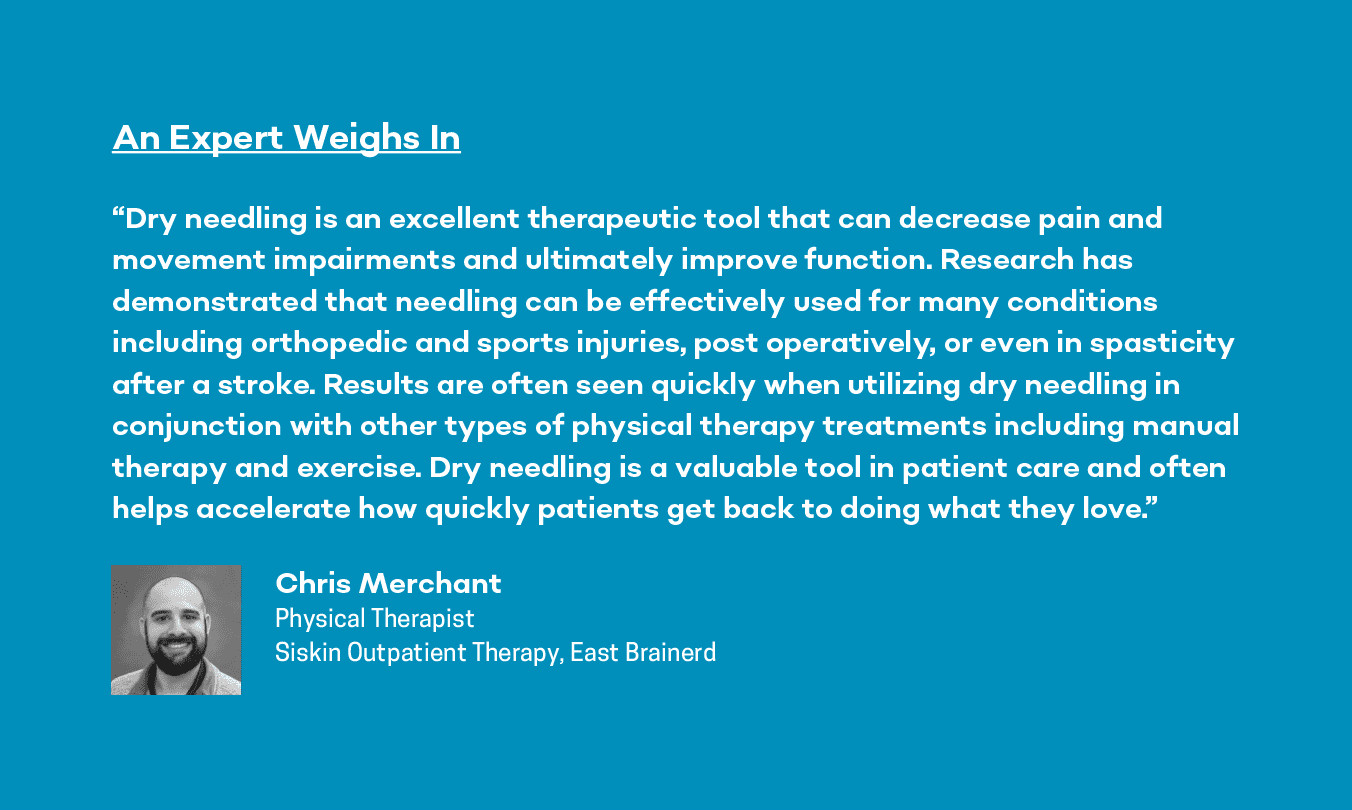Understanding Trigger Points
A trigger point is a taut band of muscle fiber that can be painful or tender to the touch. You may know it as a “knot.” Trigger points commonly form as a result of repetitive use (such as with a job or sport), improper posture, or by stress-related muscle tension.
One or many trigger points may develop in the muscles that are overused, and these trigger points can cause two types of pain. The first type is local pain at the site of the trigger point, while the other is “referred pain,” or pain that is perceived in other parts of the body away from the trigger point. Typically, if not treated, the muscle tension and pain will worsen over time.
New Solutions
While dry needling utilizes the same needles as acupuncture, it is a different technique as the history, philosophy, and training are different. Dry needling is a technique designed to relieve trigger point pain and improve function. With it, a needle is typically inserted into troublesome trigger points to release tension and promote movement. The technique is referred to as “dry” needling because the needle doesn’t contain medication and isn’t an injection.
Among others, dry needling is an effective physical therapy treatment method for those facing neck, back, or shoulder pain; pre- and post-surgical patients; and those with frequent headaches, fibromyalgia, or TMJ (painful movement of the jaw joint).
How It Works
Dry needling uses a small, sterile, single-use filament needle to penetrate the skin and stimulate the underlying trigger point and connective tissues. Once inserted, the needle will typically cause a local twitch response, or reflex, which relaxes and changes muscle fiber length and releases muscle contraction.
The needle insertion also helps reduce chemical levels that are linked to inflammation. This promotes healing in the area where the needling occurred.
You may or may not feel the insertion of the needle, and the process may cause brief soreness in both the treated area and in the area of referred pain.
Benefits to Patients
Ultimately, dry needling helps break the pain cycle by decreasing muscle contraction, decreasing chemical irritation, improving flexibility, and decreasing pain. In the past, different treatments like heating, icing, stretching, and manual therapy were the only options. While still effective for self-managing trigger points, dry needling can elicit a faster, more powerful response. HS


